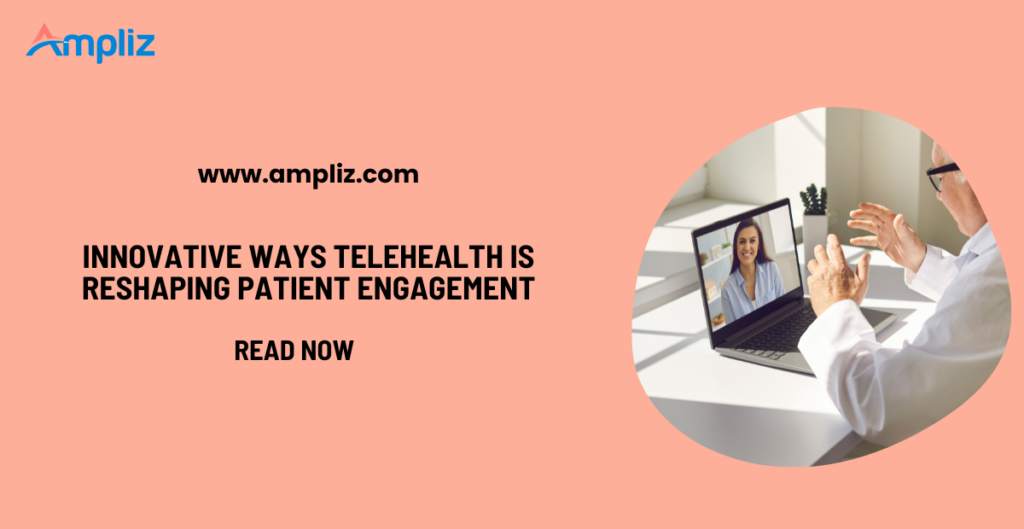Healthcare systems have needed help keeping patients involved, which is important for improving health outcomes. Patients often have problems, like not getting specialized care when needed, needing to learn more about their conditions, and being unable to communicate clearly with their healthcare workers.
Some problems make following their treatment plans difficult for individuals. In rural and underdeveloped areas, these problems are more severe and can lead to avoidable problems.
Thanks to telehealth, this is no longer the case. In healthcare, technology simplifies tasks, promotes honest communication, and provides tools enabling individuals to take control of their health.
This piece discusses how new developments in telehealth are changing how patients interact with their healthcare, which can lead to better outcomes and stronger relationships between patients and providers.
Personalizing Care with Customized Solutions
One-size-fits-all healthcare rarely works, but telehealth platforms have introduced personalized care in ways traditional systems couldn’t. By using information about patients’ medical backgrounds, lifestyles, and preferences, healthcare providers can create personalized care plans for each patient.
Telehealth apps, for instance, use this information to send personalized reminders or suggest specific health actions.
For example, someone with diabetes could receive alerts to check their blood sugar levels and advice on better meal planning. Thus, patients feel like they are being heard, and their care is customized to meet their needs.
Mental health that is more tailored to each person is making a difference and saving lives. Telehealth is being used in suicide prevention programs to show how personalized help can be given when it’s most needed. Crisis hotlines that use telehealth can move faster and provide more personalized tools and support to help stop tragedies.
Connecting Through Remote Monitoring Tools
Gone are the days when health monitoring meant repeated clinic visits. Telehealth platforms now integrate wearable technology and remote monitoring devices, enabling patients to share vital health data with their providers in real time. This reduces the need for physical consultations and encourages a sense of shared duty in health care management.
This is life-changing for people with chronic diseases.
For example, a person managing high blood pressure can use a wearable gadget to check their blood pressure daily. Healthcare providers can move quickly if they see any troubling patterns in the data. This steady flow of information makes it possible to stick to treatment plans and reassure patients even when they can’t get to the hospital.
It has an impact on more than just health. Patients can share their progress information through telehealth apps, which has helped control their recovery after surgery and lowered the risk of complications.
Communicating Better with AI-Powered Tools
Traditional healthcare often lacks communication gaps, leaving patients feeling lost or disconnected. AI-powered tools like chatbots and automated message systems used in telehealth make sure that patients always feel like they are being cared for.
These tools are available 24/7 and can help with anything from answering basic health questions to figuring out which symptoms need to be taken to immediate care.
If a person is sick at night, they can talk to a healthcare bot about their symptoms. Based on the answers, the algorithm might suggest a virtual chat or tell the person to call emergency services. With this kind of quick help, patients can trust the healthcare system and avoid needless delays.
These tools don’t just respond to issues; they also take initiative. AI can analyze a patient’s health data to spot possible problems and send alerts, ensuring that help comes when needed. This helps patients feel involved by showing that their health is being looked after and monitored.
Empowering Patients with Educational Tools
Teaching patients is important for keeping them involved over time, and telehealth apps are taking this to a new level. People with certain health conditions can use these platforms to access interactive materials like videos, articles, and quizzes. These tools improve patients’ health knowledge, allowing them to make more informed decisions about their care.
For example, someone who recently discovered diabetes could use a telehealth app to get step-by-step instructions on managing their illness.
This type of teaching clarifies issues and encourages patients to engage in their treatment programs. Patients who know more about their condition are more likely to be involved and have better results.
The educational parts of telehealth also help manage chronic diseases by giving tips in real time. These tools help people make healthier choices in their daily lives, whether by advising them on how to eat well and avoid stress.
Using Virtual Therapy to Assist with Mental Health
While mental health care has significant stigma and accessibility challenges, telemedicine is helping to address these issues. For people seeking counseling or mental health assistance, internet therapy sessions provide a rapid and specialized solution.
Telehealth is a terrific alternative for rural residents who would instead not visit the clinic. Safe video platforms enable individuals to reach out to skilled therapists, fostering deeper conversations that build confidence. Telehealth also provides mental health check-ins and group therapy choices, facilitating access to treatment.
Crisis intervention programs are particularly critical in tackling urgent mental health challenges. Technology’s role in suicide prevention has become increasingly vital through telehealth platforms, as they enable immediate connections to mental health professionals and real-time support tools. Integrated systems now combine crisis hotlines with telehealth’s virtual capabilities, delivering tailored guidance and resources to at-risk individuals.
Individuals facing stressful situations can receive immediate support through these online crisis intervention programs. Having access to these resources has been important in tackling suicide and other significant mental health challenges.
Building Engagement Through Behavioral Design
Telehealth platforms are incorporating concepts from behavioral design to engage people more effectively. Taking care of your health becomes much easier and more enjoyable when you set goals, jot down notes, and monitor your progress.
An e-health app allows users to set fitness goals and monitor their health. When users achieve their goals, they receive virtual gifts or kind words of encouragement to motivate them to keep going. These small but substantial design features create a positive feedback loop, encouraging people to behave healthily.
Gamification can also get people interested. For example, apps for younger patients could use interactive games to teach them about their illnesses. This would make medical care less scary and more fun. This method works exceptionally well in infant care, where it can be hard to keep kids interested.
Reducing Barriers to Care with Accessibility
Telehealth’s ability to eliminate geographical and logistical barriers has been a game-changer, especially for patients in underserved or rural areas. Telehealth allows people to talk to specialists or primary care doctors without traveling far.
Making it easy for people to get medical help saves them time and money and makes them more likely to get help early, which prevents additional problems before they happen. During the COVID-19 pandemic, for instance, telehealth played a crucial role in maintaining care while reducing the risk of exposure. People who could not travel in person due to distance or mobility issues could have visits made possible through telehealth systems.
Telehealth makes healthcare accessible to everyone, thanks to its user-friendly interfaces and support for multiple languages. By addressing patients’ needs, you can boost patient engagement.
Using Predictive Analytics to Enhance Proactive Care
Telehealth systems are changing the game with predictive analytics, making connecting patients with their healthcare providers easier. These algorithms can analyze patient records for trends that indicate impending health problems and provide recommendations for treatment before they become worse.
To avoid a heart-related issue, informing the patient and the healthcare provider immediately is crucial. This approach results in improved health outcomes and greater trust from patients.
Predictive data can help make treatment plans better. Using old data, telehealth tools can suggest changes to make ongoing care more effective. This method is based on facts and keeps patients interested by showing them how their health is getting better.



